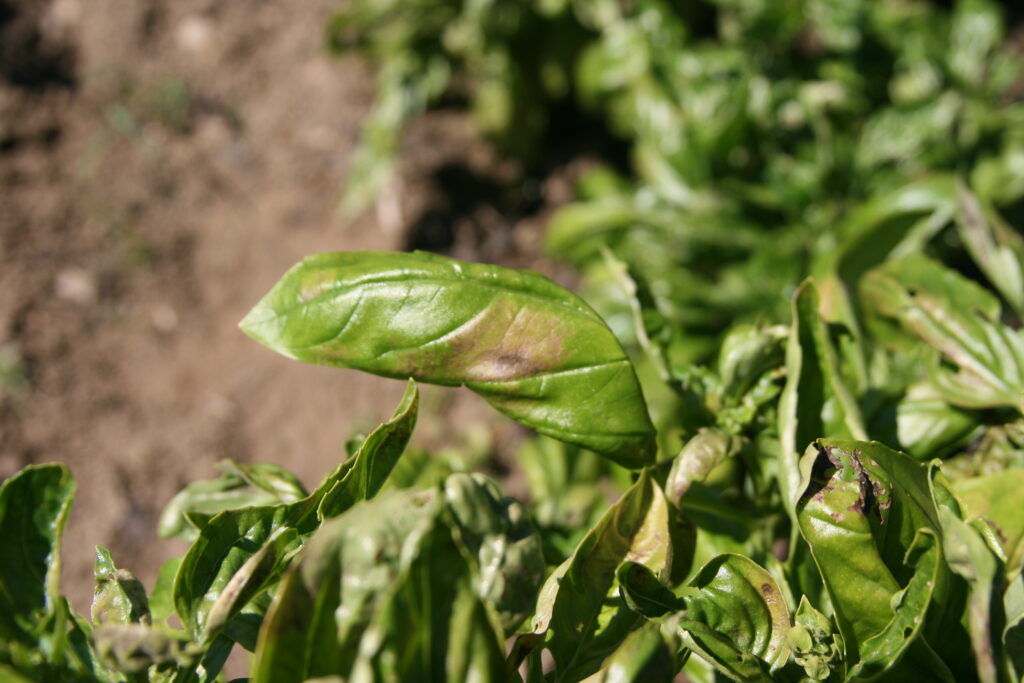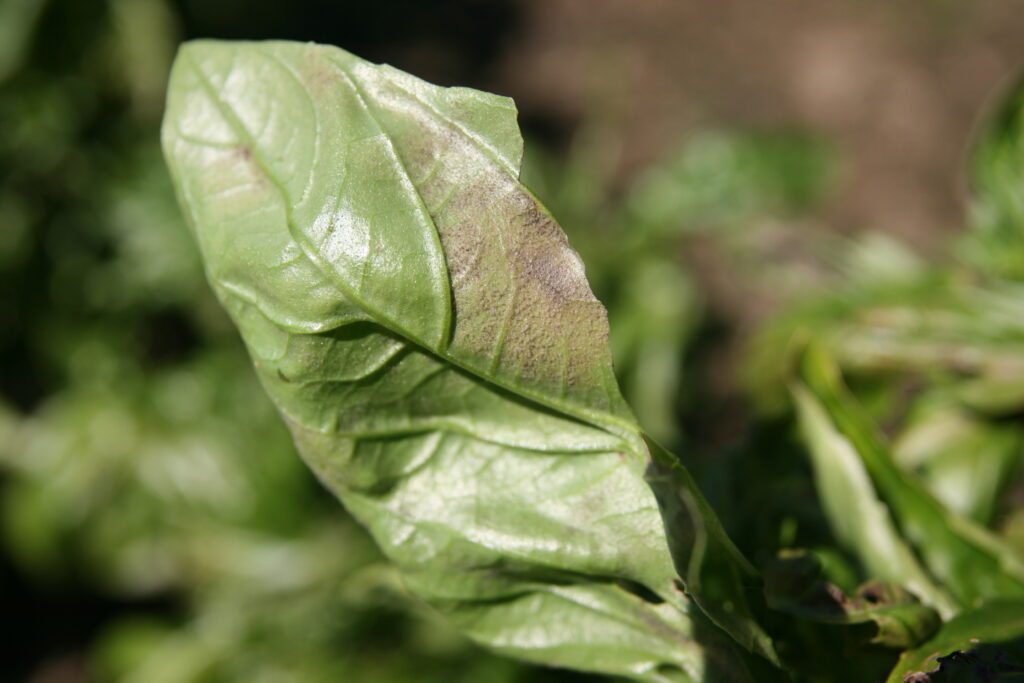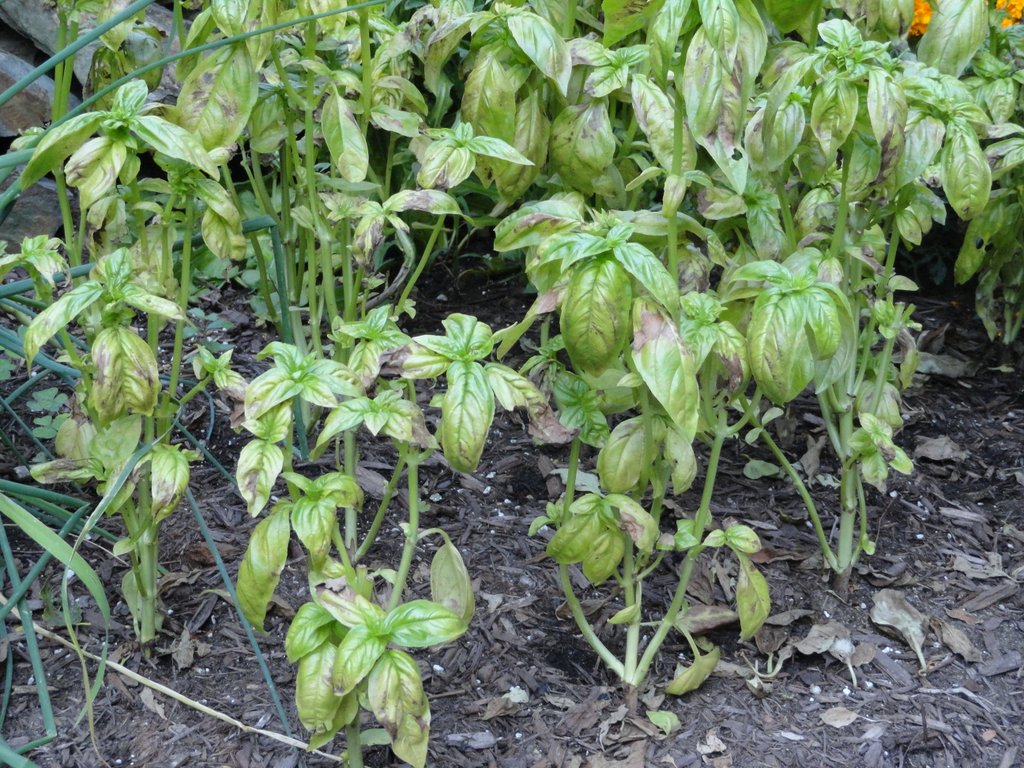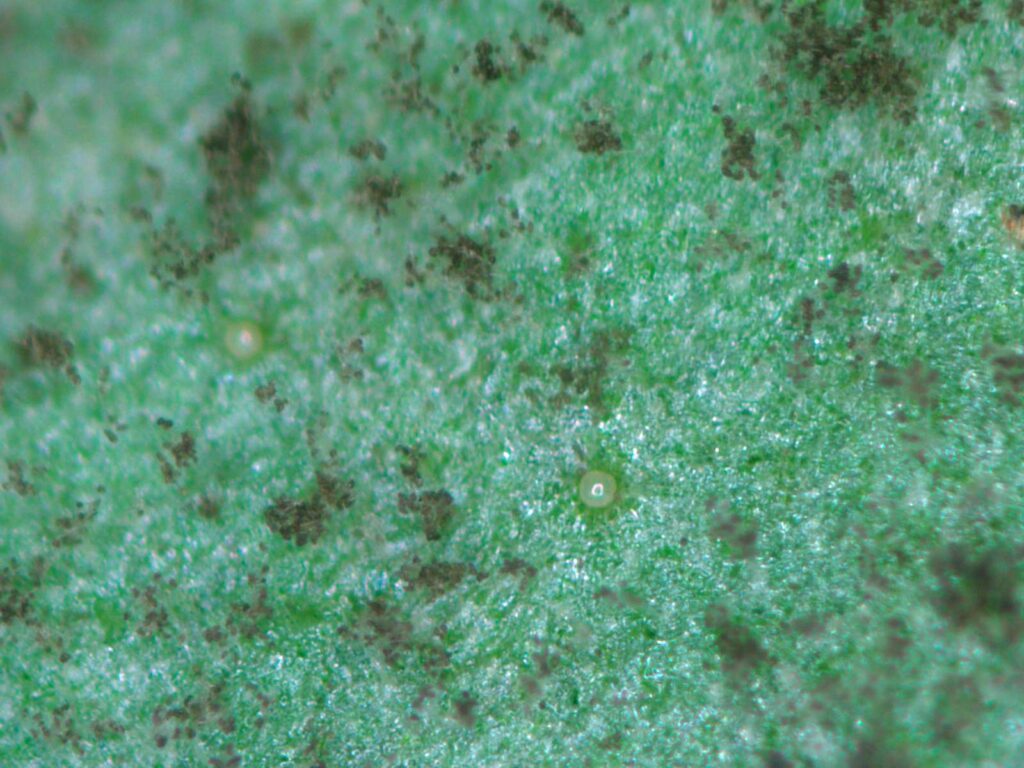
Pest: Basil Downy Mildew (Peronospora belbahrii)
Pest/disease identification and lifecycle, most common damage symptoms and crops affected:
Downy mildew of basil was first reported in Uganda back in 1930. Relatively recently it spread to Italy in 2004, France in 2005, United States (Florida) in 2007 and by 2009 had made its way to New England.

The first symptom is a pale yellowing of the upper surface of the leaves, quite similar to sunscald. Later, vein-bounded patches of dark spore production can be seen on the lower surface. This develops into a gray, fuzzy growth typical of downy mildews of other crops. At first you may be able to convince yourself that some soil has been splashed onto the underside of the leaf, but soon the plants will be going down and it will be clear that it is not a problem that can be washed away.
The disease may be seedborne, but that is probably a very rare event. Its spread is most likely due to wind-blown spores. In damp conditions they can potentially move far and wide. Seedlings that are already infected with basil downy mildew are sometimes sold after having been transported great distances, and infected seedlings sourced from southern states where downy mildew overwinters are increasingly thought to be a significant source of initial infection in our region.

The infected leaves are safe to eat, and reports from growers are that mildly infected leaves still make a fine tasting pesto. Some types of basil are less or not susceptible at all. For example, Thai basil is almost always fine. At least one grower reports that lemon basil is not susceptible, and that the purple basil seems a bit less susceptible.
The common sweet basil is the most susceptible. Several new varieties have been developed by Rutgers University, with strong downy mildew resistance (DMR), but not complete immunity. Growers have reported that these varieties can hold out against the disease an extra two weeks compared to non-resistant varieties. Varieties include, but are not limited to, Obsession DMR, Devotion DMR, Thunderstruck DMR and Passion DMR. If you see downy mildew on any variety that you are growing, make pesto fast.

Management options:

Anything that will allow leaves to dry quickly will help, e.g., weed control, good spacing, venting tunnels, watering in the morning instead of the evening, etc. One strategy is to make new plantings every three to four weeks in hopes that if the spores come in and infect one planting it can be destroyed so it does not release spores, and there will be another planting waiting in the wings. Some growers have claimed that they caught symptoms early, cut plants back hard — removing all leaves (critical to the success of this approach) — before a stretch of sunny dry weather, and that regrowth avoided infection as there were no infected living leaves to act as a source of inoculum. It’s worth a shot (time to make pesto anyway, right?) but not a plan to be relied on as foolproof.
You can continue to track the spread of the disease this season with the basil downy mildew monitoring map here.
